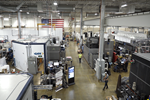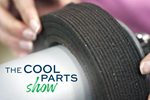3D Printing Rotors for Electric Motors (Video)
Oak Ridge National Laboratory describes research into applying additive manufacturing to replace windings in DC motors.
Can we 3D print an electric motor? Maybe yes for one vital component of it: the rotor — and that possibility holds important promise for better motor performance. Amiee Jackson is a researcher with Oak Ridge National Laboratory’s Manufacturing Demonstration Facility, and in this video, she discusses her work in producing rotors via laser powder bed fusion. Rotors are usually made by winding a conductive alloy. Changing the alloy composition to improve motor performance impedes manufacturing, because that change reduces the ductility that is important for winding. By offering a way to print the rotor with no winding involved, additive manufacturing potentially solves this problem.
Related resources:
- Oak Ridge National Laboratory’s Manufacturing Demonstration Facility
- AM technology from Renishaw
- More on laser powder bed fusion
- Additive manufacturing for another motor component: magnets
Related Content
-
3D Printing Molds With Metal Paste: The Mantle Process Explained (Video)
Metal paste is the starting point for a process using 3D printing, CNC shaping and sintering to deliver precise H13 or P20 steel tooling for plastics injection molding. Peter Zelinski talks through the steps of the process in this video filmed with Mantle equipment.
-
Video: 5" Diameter Navy Artillery Rounds Made Through Robot Directed Energy Deposition (DED) Instead of Forging
Big Metal Additive conceives additive manufacturing production factory making hundreds of Navy projectile housings per day.
-
This Year I Have Seen a Lot of AM for the Military — What Is Going On?
Audience members have similar questions. What is the Department of Defense’s interest in making hardware via 3D printing over conventional methods? Here are three manufacturing concerns that are particular to the military.











